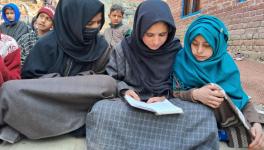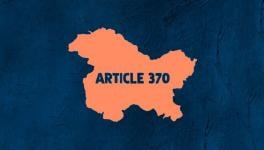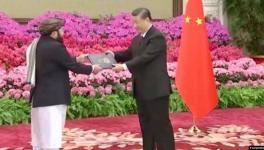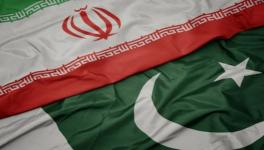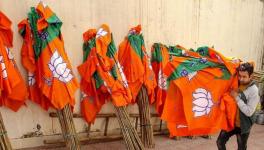Are Pakistan and China One Common Enemy?
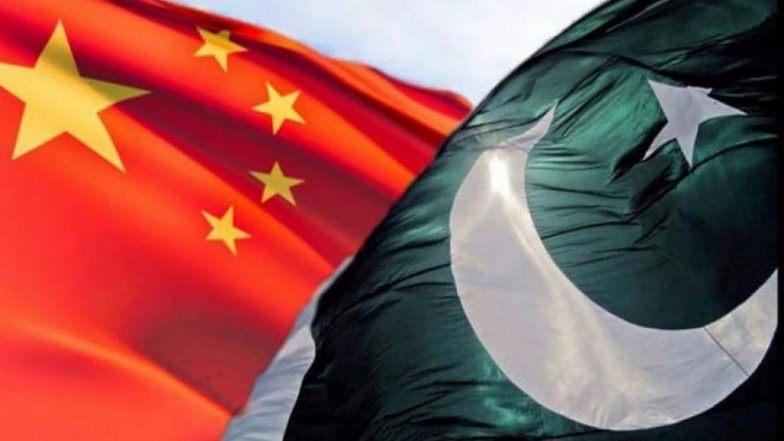
Image Courtesy: Latestly
Is the arc of conflict in Jammu and Kashmir widening and is China “assuming” a much larger role in the historic dispute? Has China more or less “adopted” Masood Azhar, the head of Jaish-e-Mohammed (JeM)? And have the two fronts, Pakistan and China, transformed into “one single front”?
In an interview to Indian Express, Naeem Akhtar, the official spokesperson of PDP and a Minister of Public Works in the PDP-BJP government, said his party feels China is expanding its role in Kashmir. As evidence to back the claim, Akhtar cited China blocking the inclusion of Masood Azhar in the list of entities or persons falling under the purview of ‘Al Qaeda Sanctions Committee’ set up under Resolution 1267 of the UN Security Council.
He went on to hold JeM responsible for attacks in the last “more than three years”. And claimed that, “now it is one single front, circling around. From Bhutan to Arunachal Pradesh, Ladakh, Valley to Jammu, Sri Lanka and Maldives, it is all one front. Pakistan and China aren’t separate”.
Naeem Akhtar refers to “last more than three years” to suggest the time when JeM re-emerged after lying dormant for nearly a decade. This is also around the time when BJP-RSS assumed office in New Delhi 2014.
According to the J&K Police, Jaish announced its presence with a fidayeen attack in May 2000 and its heyday came to an end in 2003 following a crackdown by Pakistan. For the next 10 years, the group was more or less absent from J&K. It returned in 2014, mounting major attacks in November 2015 on army camps in Tangdhar and Kupwara, followed by the attacks on the Pathankot air force base in January 2016, the Army Brigade headquarters in Uri on September 18, 2016, Pulwama on August 27, 2017, the 182 bn of BSF camp on October 3, 2017 and the Lethpora camp on December 31, 2017.
While the JeM launched these attacks, how is it that the world’s fourth largest army could not prevent them? And if they are unable to prevent such attacks, what does it say about the alertness and vigilance of those meant to protect the country?
There are good reasons to believe that JeM survives in Pakistan because it is seen as an “asset” by the Pakistan’s military establishment. Significantly, Masood Azhar was in Indian custody from February 1994 to December 1999. He was freed along with Ahmed Omar Sheikh and Mushtaq Ahmed Zargar by the BJP-led government in December 1999 when its foreign minister traveled with them to Kabul to ensure the release of 176 passengers and crew of IC 814 taken hostage by five Pakistani militants.
The hijacking of the A300 plane, the inability to stop the hijacking and the reasons for the miserable failure of the BJP-RSS government in the whole affair are worth remembering. The fact that Indian authorities had to release three high profile militants and officially drop charges filed against them speaks volume of the then government’s incompetence. Pitching for the inclusion of Azhar’s name in the UNSC List for sanctions against Al Qaeda to make up for these failures is a clumsy way of trying to show that the Government of India is engaged in doing something about the person they themselves freed.
It appears to be a PR exercise to impress Indians about the decisiveness of the BJP-RSS government to isolate Pakistan. When it is known that listing will not bring Masood Azhar, Omar Sheikh or Mustaq Zargar back into Indian custody, why the hype? And why make the issue develop into a major friction point with China?
China claims there’s a “technical issue” that prevents them from giving their approval for inclusion of Masood Azhar’s name in the sanction list. What are they? And how legitimate are they? If China indeed is using the listing issue to upset New Delhi, why would it then scale up tensions and encouraging JeM attacks on Indian soil? Why go down that road when diplomatic quid-pro-quo could succeed?
Meanwhile in Kashmir, it appears that the PDP is trying to promote a scary scenario to push BJP-RSS to withdraw from its intransigent stance of neither talking to Pakistan nor initiating a political dialogue in J&K.
The “last three years” are also significant because ceasefire violations with Pakistan along the Line of Control and International Border (IB) have risen during this period and so have transgressions with China along the Line of Actual Control.
This is a period when India and Pakistan have engaged in a tit-for-tat approach, leading to the death of 43 civilians and 56 soldiers. Ten thousand people who live on the border have lost their livelihood.
Mehbooba Mufti, in her address to the Assembly, has said Pakistan violated the LoC and the IB 834 times in the last three years; 222 cases in 2015, 233 in 2016 and 379 in 2017. But the figures also show that violations came down to 62 in 2011 and 114 in 2012 before rising to 347 in 2013 and reaching 583 in 2014.
The graph of casualties shows how the rhetoric of “surgical strike” and inflicting 3-4 times more “pain” on Pakistan targets not just military personnel but even civilians and is letting agents of war and mayhem carry on spewing venom.
The point is if the two fronts have indeed turned into a “single front”, can the BJP government and its fellow travelers in the media escape their contribution for bringing this situation about?
There are good reasons to believe that India, at the egging of US and Japan, is creating obstacles for the China Pakistan Economic Corridor, which is integral to China’s trillion-dollar One-Belt-One-Road Initiative, besides raising the cost for China in Pakistan-administered Kashmir.
Transgressions between Indian and Chinese troops along the LAC have increased from 271 in 2016 to 415 in 2017. The rise in areas of dispute have also risen from 2 in 1995 to 23 in 2017. These may be signs of weakness of the Indian diplomacy at a time when India, preoccupied with internal armed conflicts, is incapable of fighting a war at home and at the border.
If China has begun to ‘assume’ a role in the 70-year dispute between India and Pakistan and the two fronts have transformed into one single stretch from the border to the coastlines, then is it not a blunder?
It is an axiomatic truth that an Army stretched and battling insurgency at home and confronting a volatile border/ceasefire line besides is a mark of being beleaguered. Such a condition is most unsuited for the kind of warmongering the BJP-RSS government and its minions promote. The bravado displayed on TV screens does not match the reality on the ground where the armed force personnel feel let down by complaints registered against them while stone-pelters are being released.
Therefore, what the PDP spokesperson said should be read with caution. Their real aim is to raise fear about China’s intention in order to send the message that this would exponentially expand the arc of conflict which India’s military will be unable to handle. The remarks should be read not so much for China’s links with Jaish-e-Mohammed, which is based on conjecture, but as a warning that India is unmindful of the consequence of increasing disputes with its neighbours and to apply more pressure on BJP to change course.
Question is will the BJP-RSS stop from sacrificing Indian people’s interest for peace and tranquility at the altar of its electoral self-interest? In other words, Naeem Akhtar’s statement is a warning that, unless handled wisely, the arc of Kashmir dispute is going to expand, while India’s capacity to withstand this scenario will have diminished for want of political and diplomatic response.
Get the latest reports & analysis with people's perspective on Protests, movements & deep analytical videos, discussions of the current affairs in your Telegram app. Subscribe to NewsClick's Telegram channel & get Real-Time updates on stories, as they get published on our website.









